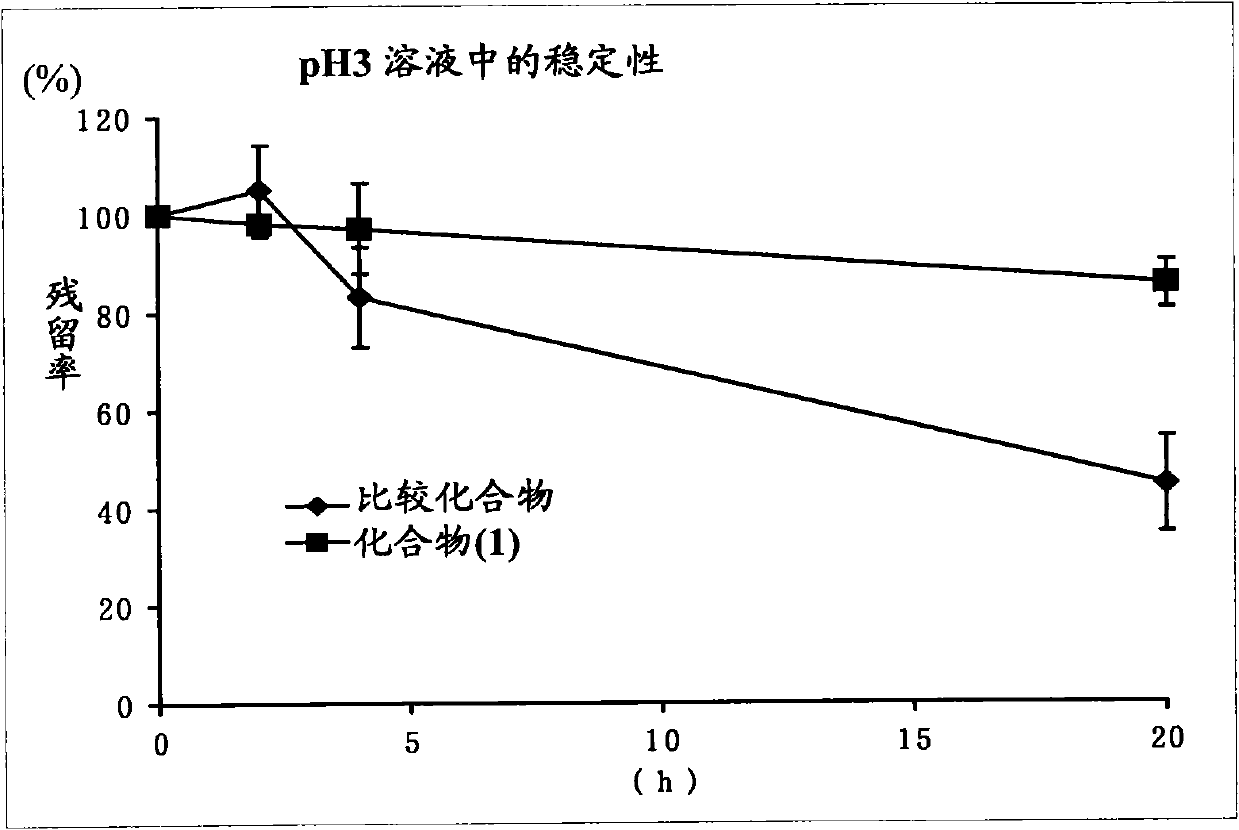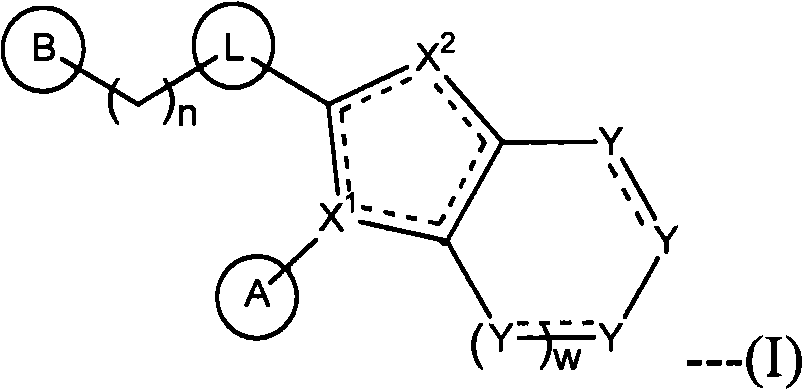Substituted amine derivative and medicinal composition comprising same as the active ingredient
A compound and substituent technology, applied in the field of new substituted amine derivatives, can solve the problems of sufficient compound activity and insufficient physical and chemical stability
- Summary
- Abstract
- Description
- Claims
- Application Information
AI Technical Summary
Problems solved by technology
Method used
Image
Examples
reference example 1
[0164]
[0165] 1,2,3,5-Tetra-O-benzoyl-2-C-methyl-D-ribofuranose 10.282g and 4-amino-6-bromo-7H-pyrrolo[2,3-d] A suspension of 4.215 g of pyrimidine-5-carbonitrile in 180 mL of acetonitrile was placed under ice cooling, 8.0 mL of DBU and 12.8 mL of TMSOTf were added, and stirred at 60°C for 17 hours. The reaction liquid was poured into saturated sodium bicarbonate water, and extracted with ethyl acetate. The organic layer was washed with saturated brine, dried over anhydrous sodium sulfate, filtered, and the filtrate was concentrated under reduced pressure. The residue was subjected to silica gel column chromatography (ethyl acetate / chloroform) to obtain 5.394 g of pale yellow crystals of the above-mentioned title compound.
[0166] 1 H-NMR (CDCl 3 )δ=1.68(s, 3H), 4.78-4.90(m, 3H), 5.66(br-s, 2H), 6.87(s, 1H), 7.26-7.33(m, 1H), 7.44-7.52(m, 6H), 7.59-7.64(m, 3H), 7.94-7.97(m, 2H), 8.12-8.15(m, 4H), 8.39(s, 1H).
reference example 2
[0168]
[0169] To a MeOH 130 mL solution of 4.394 g of the compound obtained in Reference Example 1 was added 171 mg of NaOMe, and stirred at room temperature for 4.5 hours. Active Dowex was added to the reaction solution to make the pH = 5, filtered, and the filtrate was concentrated under reduced pressure. The residue was subjected to silica gel column chromatography (chloroform / methanol) to obtain 1.036 g of colorless crystals of the title compound.
[0170] 1 H-NMR (DMSO-d 6)δ=0.82(s, 3H), 3.75-3.90(m, 3H), 4.40(br-s, 1H), 4.93(m, 1H), 5.17(m, 1H), 5.30-5.32(m, 1H) , 6.03(br-s, 1H), 7.04(br-s, 2H), 8.17(s, 1H).
Embodiment 1
[0172]
[0173] Compound (1) represented by the above formula is produced using the following method.
[0174] To a solution of 200 mg of the compound obtained in Reference Example 2 in 5 mL of isobutanol, 229 mg of C-biphenyl-4-yl-methylamine and 0.28 mL of diisopropylethylamine were added, and the mixture was refluxed for 14 hours. The reaction solution was concentrated under reduced pressure, and the residue was subjected to silica gel column chromatography (chloroform / methanol) to obtain 63 mg of the title compound (1) as pale yellow crystals.
[0175] 1 H-NMR (DMSO-d 6 )δ=0.72(s, 3H), 3.71-3.74(m, 1H), 3.86-3.90(m, 2H), 4.03-4.05(m, 1H), 4.64-4.73(m, 2H), 5.07(s, 1H), 5.37(d, J=6.8Hz, 1H), 5.94(m, 1H), 6.18(br-s, 2H), 6.40(br-s, 1H), 7.33-7.37(m, 1H), 7.43 -7.47(m, 4H), 7.66(d, J=8.1Hz, 4H), 8.03(s, 1H), 8.14(m, 1H).
[0176] The following compounds (2) to (6) were synthesized by the same method.
[0177] Compound (2)
[0178]
[0179] 1 H-NMR (CD 3 OD)δ=0.8...
PUM
 Login to View More
Login to View More Abstract
Description
Claims
Application Information
 Login to View More
Login to View More - R&D
- Intellectual Property
- Life Sciences
- Materials
- Tech Scout
- Unparalleled Data Quality
- Higher Quality Content
- 60% Fewer Hallucinations
Browse by: Latest US Patents, China's latest patents, Technical Efficacy Thesaurus, Application Domain, Technology Topic, Popular Technical Reports.
© 2025 PatSnap. All rights reserved.Legal|Privacy policy|Modern Slavery Act Transparency Statement|Sitemap|About US| Contact US: help@patsnap.com



